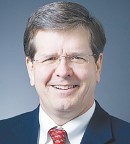Report from ‘The Asco Post’
Lung cancer persistently remains the leading cause of cancer death among men and women in the United States. Only about 15% of lung cancers are diagnosed at the localized stage, when clinical intervention could markedly improve patient outcomes. For decades, lung cancer specialists and advocacy groups—most notably Lung Cancer Alliance—have advocated for the integration of lung cancer screening into the standard of care. In 2011, the National Lung Screening Trial, comparing low-dose computed tomography (CT) with chest x-ray, reported a 20% lung cancer–specific mortality reduction in the high-risk cohort screened with annual low-dose CT. Established by the National Cancer Institute, this landmark trial validated the clinical value of early detection in lung cancer.
Two years later, after months of heated debate, the U.S. Preventive Services Task Force (USPSTF) recommended annual low-dose CT screening for high-risk persons who met certain criteria. The last leg of this long journey was coverage, and it took another 2 years and more political wrangling before the Centers for Medicare & Medicaid Services (CMS) issued its 2015 National Coverage Determination, which covered once-per-year CT screening for Medicare beneficiaries who meet the eligibility requirements. It was a long-awaited victory for advocates of lung cancer screening; however, initiating population-based CMS screening programs has proved yet another uphill battle.
ACS Report: Slow to Adopt
Despite solid data demonstrating the clinical value of lung cancer screening and the support of major cancer organizations such as ASCO and the National Comprehensive Cancer Network® (NCCN®), low-dose CT screening among high-risk smokers remains low and unchanged since the 2013 USPSTF recommendation, regardless of the potential to prevent thousands of lung cancer deaths per year.
In the first national estimate of low-dose CT lung cancer screening following the USPSTF recommendation, investigators from the Surveillance & Health Services Research, American Cancer Society (ACS), reported that from 2010 to 2015, the percentage of eligible smokers who had low-dose CT in the past 12 months remained low and constant, from 3.3% in 2010 to 3.9% in 2015.1 Moreover, of the 6.8 million U.S. smokers eligible for low-dose CT screening, only 262,700 received it. According to the study’s authors, their findings underscore the need to educate clinicians and smokers about the benefits and risks of low-dose CT screening to engage in informed decision-making conversations with clinicians.

“Independent of all complicating issues such as logistics and cost, the national implementation of low-dose CT screening is simply not hitting a nerve for its value as a public health service.”
— James Mulshine, MD
Speaking with The ASCO Post, nationally renowned lung cancer expert and screening advocate, James Mulshine, MD, said: “Independent of all complicating issues such as logistics and cost, the national implementation of low-dose CT screening is simply not hitting a nerve for its value as a public health service. For instance, you have to screen fewer people for lung cancer than for breast cancer to save one life. Data such as these aren’t resonating.”
He continued: “And beyond that, there is a strong correlation between screening and smoking cessation. For example, the Swedish Cancer Institute in Seattle has a CT screening program that incorporates a smoking cessation plan by an advanced nurse practitioner, Joelle Fathi, and at least 50% of the smokers in her program quit during the course of their screening. And that benefit extends far beyond deceasing the risk of lung cancer, into heart disease and chronic obstructive pulmonary disease, among other smoking-related morbidities. Unfortunately, there are people who don’t understand we can turn CT screening into a larger conversation about overall public health.”
Studies Identify Barriers to Implementation
Other studies have identified barriers to lung cancer screening implementation within the medical community. For instance, researchers at Wake Forest Baptist Medical Center in Winston-Salem, North Carolina, surveyed primary care providers from their medical center and asked questions about their knowledge of screening recommendations, barriers to screening implementation, and interest in further education. Their findings were published in Cancer Epidemiology, Biomarkers & Prevention.2
Facts About Screening for Early Lung Cancer
Most of the 212 participating physicians had been in practice for up to 10 years. The results were telling; slightly more than half of the respondents (53%) knew fewer than 3 of the 6 screening guideline selection components, and only 42% believed low-dose CT screening was very or moderately effective, whereas 28% thought it was minimally or not effective. Although concerns regarding false-positive results are uniformly cited as barriers to screening, the Wake Forest study found that lack of awareness among primary care physicians regarding the mechanisms of the screening process itself was an impediment.
In another study, researchers from Boston University surveyed about 300 pulmonologists nationwide to ascertain their views on low-dose CT screening. The results, published in the Annals of the American Thoracic Society,3 found that about only half of them recommended low-dose CT for smokers eligible for screening, and a small, but not negligible, minority recommended against screening, even for qualified patients.
The authors sent a 33-question Web-based survey to active pulmonologists at VA pulmonary clinics in the 50 U.S. states and Puerto Rico. The survey assessed three domains from the Promoting Action on Research Implementation in Health Services framework: acceptance of evidence, preparedness and receptivity of the local context, and barriers to implementation.
According to the study’s authors, most pulmonologists (61.5% agreed, 15.9% strongly agreed) believed the evidence for initiating low-dose CT screening was strong. However, the survey also suggested that contextual limitations were a significant barrier to implementation, which, given the components necessary for high-quality lung cancer screening, is an important finding. In addition, costs associated with staff and implementation were noted as a significant barrier among the surveyed pulmonologists.

Renda Soylemez Wiener, MD
Asked to comment on barriers to screening, Renda Soylemez Wiener, MD, lead author of the American Thoracic Society and the American College of Chest Physicians policy statement on implementation of low-dose CT screening programs, told The ASCO Post, “Even though low-dose CT screening has been available for a few years, it is still a relatively new tool compared to other screening methods such as mammography and colonoscopy, and consequently there’s a lack of awareness among segments of the medical and patient community.”
She continued: “Community primary care physicians play an important role in screening, but they have so many competing demands during their brief patient encounters that it’s hard for them to find time to initiate a shared–decision-making conversation on such a complex issue. Moreover, the health community hasn’t done as well as we could in disseminating the necessary information out to high-risk people in the general public. And the current guidelines call for low-dose CT screening to be conducted by a comprehensive screening program, and many hospitals and medical centers are still struggling to get up to speed and put the required components into place.”
The WellStar Experience
In 2008, Daniel L. Miller, MD, and associates launched a low-dose CT lung cancer–screening program within the WellStar Health System, consisting of 5 hospitals, 3 health parks, 140 outpatient medical offices, and 12 imaging centers that provide care in a 5-county area of approximately 1.4 million people in metropolitan Atlanta. The researchers used screening criteria from the International Early Lung Cancer Action Program (I-ELCAP) and NCCN guidelines. They screened 1,267 persons from 2008 through 2013, 83% of whom were current or former smokers. Only 2.8% of those screened underwent an invasive workup, and 83% were found to have cancer. Of the diagnosed lung cancers, 64% were pathologic stage I. Compliance was excellent at 95%, and there was no operative mortality. The 5-year survival was an outstanding 71%, which flew in the face of predictions by some that community centers were not equipped to achieve the excellent outcomes reported by the National Lung Screening Trial.

Daniel Miller, MD
One metric by which a population-based screening program’s value is measured is the ratio between the number of patients needed to be screened to save a single life. In the National Lung Screening Trial, 320 patients were screened for every life saved.
“Over the past 3 years, we have engrained our screening philosophy within our WellStar Health System. Our patients are usually asymptomatic, and for every 40 scans, we’re picking up 1 lung cancer, with the NCCN category 1 and 2 criteria. We also scan moderate-risk patients if their family cancer pedigree puts them at risk for lung cancer. Surprisingly, we’re treating more women for lung cancer than men, which is a new trend in the United States, especially among female never-smokers,” said Dr. Miller.
Dr. Miller stressed that proper infrastructure is key to success in a screening program. “We have 7 dedicated radiologists, which is far more efficient than dozens of part-timers. We’re currently screening about 200 people per month. From 9 to 100 are new patients, and the other 100 are in for their follow-up scans. About 40% of our lung cancers are on the initial scan, and the other 60% are picked up during follow-up scanning. This is screening for life, and it requires a full-service, well-coordinated infrastructure.” The WellStar screening program also stresses smoking cessation. “If there were no tobacco products in America, 50% of our hospitals would be closed,” said Dr. Miller.
Lung Cancer Alliance: Federal Neglect
Lung Cancer Alliance, the nation’s leading lung cancer advocacy group, has been at the forefront of the struggle to increase research funding and establish lung cancer early-detection screening programs. In an interview with The ASCO Post, Lung Cancer Alliance President and Chief Executive Officer, Laurie Fenton Ambrose stated: “First, it is important to consider it has been just a little over 3 years since USPSTF, followed by CMS a little over a year later, gave their respective endorsements to lung cancer screening for the at-risk public, which led to private insurance and Medicare coverage without copays, coinsurance, or deductibles for this same population. Adapting public health infrastructure to incorporate this new preventive service was encumbered by the timing of these final policy determinations, despite its scientific validation in 2010.”

Laurie Fenton Ambrose
Ms. Ambrose continued: “Consider that 20 years after similar processes, we are still grappling with improving colon cancer screening adherence rates. It is premature for anyone to suggest in this time frame that lung cancer screening is not working. We are in early start-up stages.”
Not a National Public Health Priority
Lung Cancer Alliance leadership believes strongly that the main reason for the slow uptake of low-dose CT screening programs has been the federal government’s reluctance to make lung cancer screening a national public health priority. “Lung cancer can often be successfully treated and cured if caught early using low-dose CT. Yet federal policies that should be promoting widespread screening among at-risk populations are nonexistent,” admitted Ms. Ambrose. “No national educational awareness campaign is under development. No coordinated effort to reach the primary care community with information is underway. No calls to action to engage state Departments of Public Health to revise strategic plans around lung cancer screening have been activated. Education and outreach efforts are underway by nonprofits to reach those at risk, but they lack critical public health partnerships.”
Lung Cancer Alliance Advocates for CT Screening
She pointed out that it was a patient advocacy organization, not the federal government, that partnered with a multidisciplinary team of doctors to devise a framework to guide the responsible implementation of lung cancer screening in community settings. Lung Cancer Alliance’s Screening Centers of Excellence Network is a de facto national pilot program, now totaling over 480 hospitals—all adhering to screening best practices in the continuum of care. “This volunteer effort has proved to those who doubted that lung cancer screening could be scalable and replicable in community settings nationwide that it is possible.”
Reimbursement Cuts Hinder Implementation
Cost is always an issue in community-based hospital and medical centers running on tight margins. To that end, screening advocates were dismayed when substantial changes to two important lung cancer screening G codes appeared in the 2017 Hospital Outpatient Payment System (HOPPS) proposed rule, which reduced reimbursement rates for low-dose CT lung cancer screening shared–decision-making session (G0296) and actual low-dose CT lung cancer screen (G0297) by 64% and 44%, respectively, in comparison to 2016 payment rates.
Reacting to the HOPPS rule, Ms. Ambrose said: “These dramatic cuts in reimbursement rates for screening services in hospital outpatient departments—just as community-based hospitals are beginning to offer annual low-dose CT services to local patients—discourage the delivery of these life-saving services. In fact, if these services are unavailable in the outpatient setting, it will have the greatest negative impact on the underserved poor and minority patients due to their reliance on hospital outpatient departments located in inner cities or large geographic areas. We find it troubling that such cuts would come on the heels of federal approval of the benefits of lung cancer screening.”
Closing Thoughts
We have not yet developed ways to detect many cancers at early, treatable stages, leading to poor outcomes. However, well-coordinated low-dose CT lung cancer screening such as Dr. Miller’s WellStar program demonstrates that early detection of lung cancer is a cost-effective method to save lives and improve overall health outcomes in persons at risk for developing lung cancer. But rolling out high-quality screening programs across the nation will take a concerted effort to raise awareness among providers and patients about the benefits of screening. As Ms. Ambrose noted, the government needs to make lung cancer screening and smoking cessation a national priority. A disease that is treatable and preventable should not remain our number-one cancer killer. ■
Disclosure: Drs. Mulshine, Wiener, and Miller and Ms. Ambrose reported no conflicts of interest.
References


